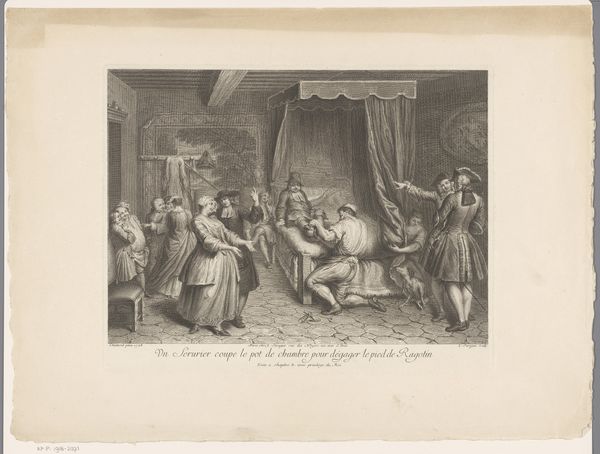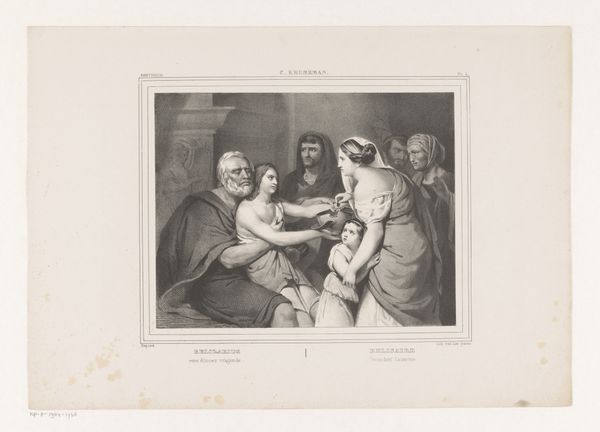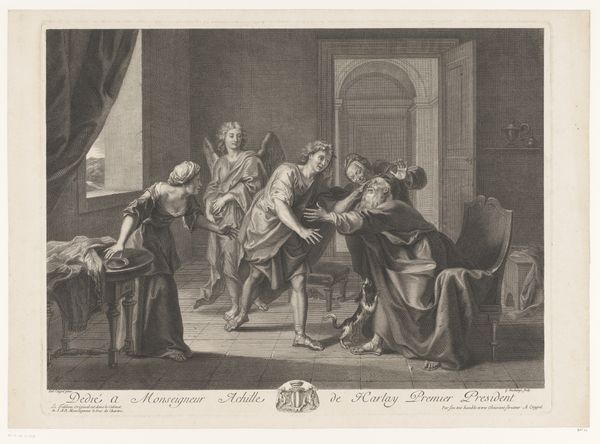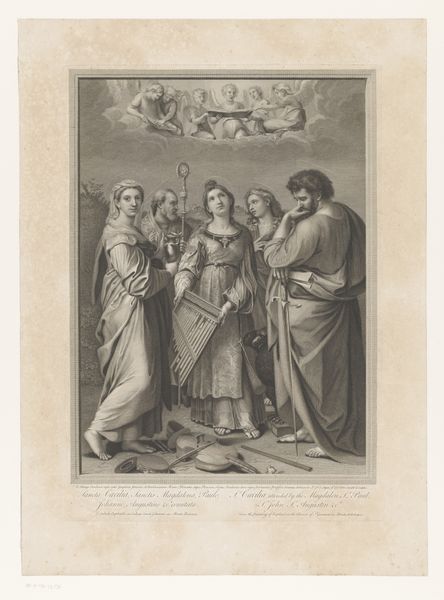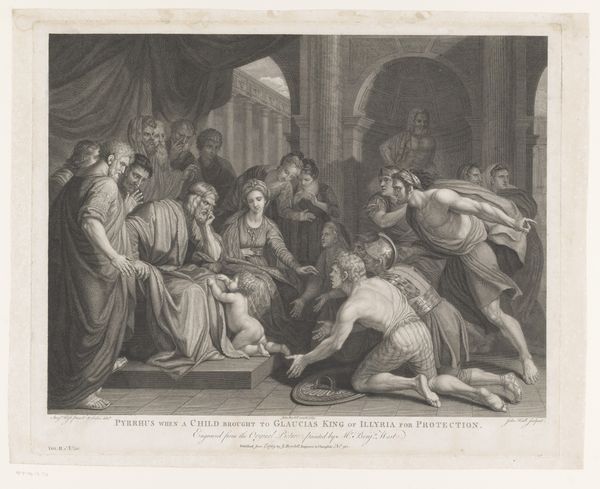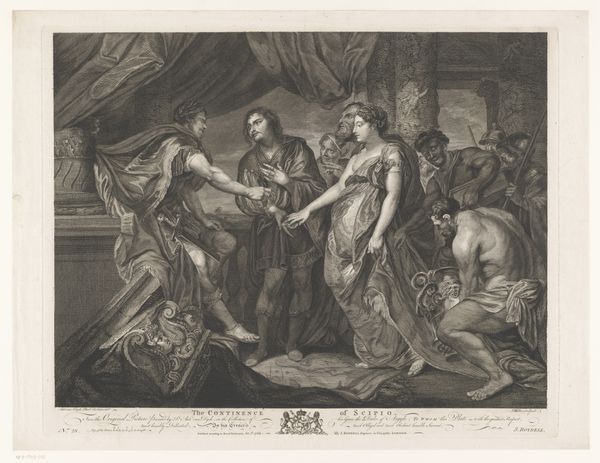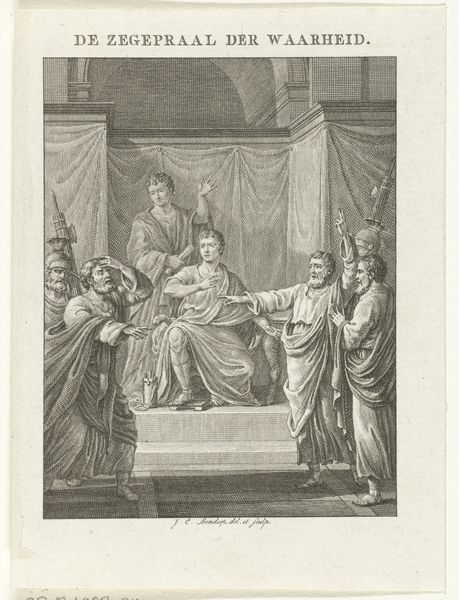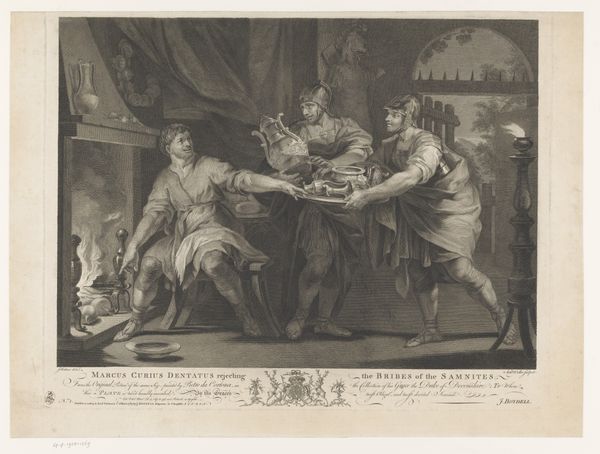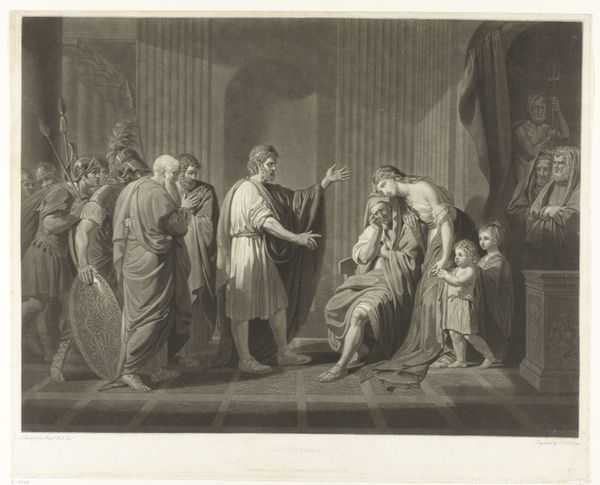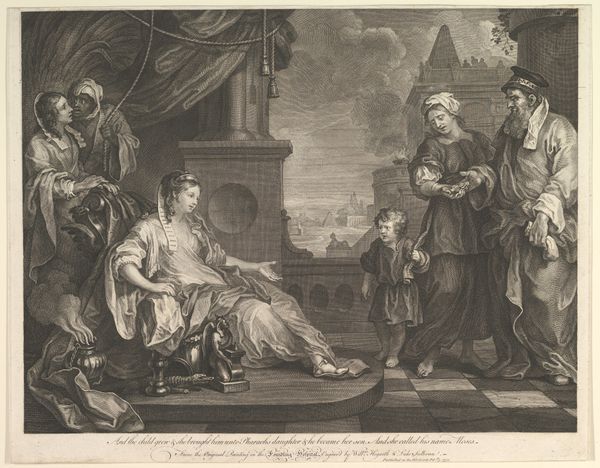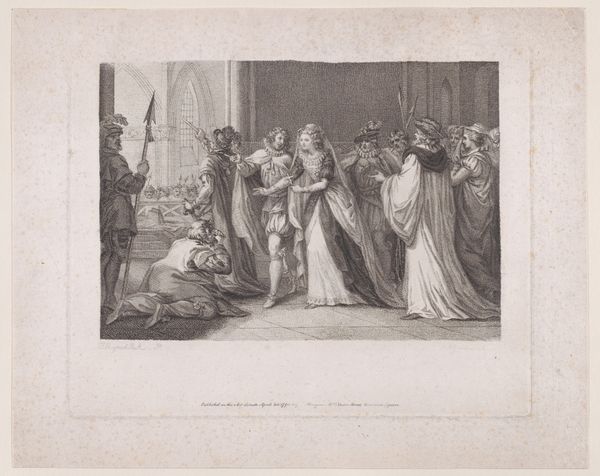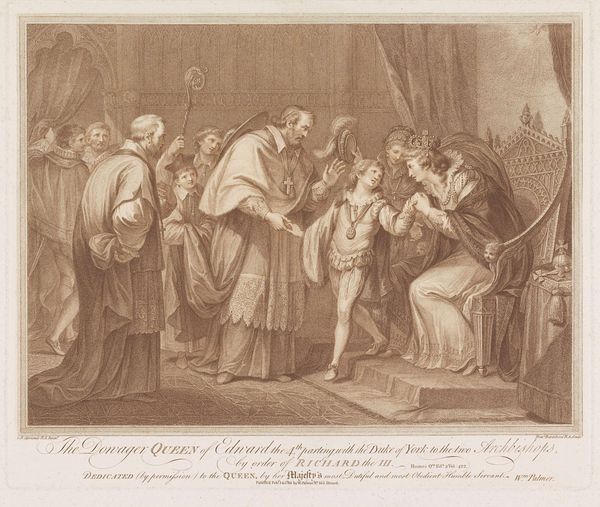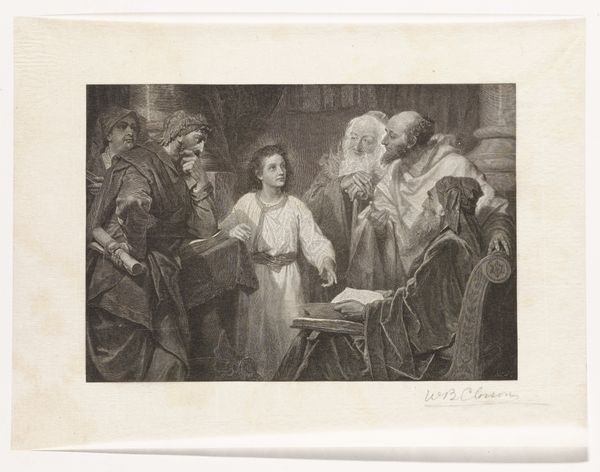
Dimensions: height 399 mm, width 488 mm
Copyright: Rijks Museum: Open Domain
Curator: Robert Strange etched this engraving, “Esther before King Ahasuerus,” between 1762 and 1767. The crispness of the line work is striking. Editor: Absolutely. My initial reaction is one of quiet tension; Esther appears to be swooning or fainting. I'm curious how the story frames the power dynamics at play here. Curator: Consider the engraving process. This isn't spontaneous drawing; it’s meticulously incised lines on a metal plate, built up layer by layer. It would require immense skill and labor to achieve this level of detail. Editor: And how the medium itself plays into the representation. The story of Esther is complex, tackling themes of bravery, power, and negotiation within patriarchal structures. The queen’s Jewish identity, initially concealed, becomes crucial. To faint before the King suggests weakness but perhaps strategy too. Curator: Exactly. The act of engraving also allows for wider dissemination, democratizing the image, in a sense. Although access to engravings would still have been largely restricted to those with some level of disposable income and leisure time. How does it serve a patron in the upper class? Editor: Good point. Distributing biblical scenes serves complex purposes. On one level, reinforcing cultural narratives, particularly surrounding women in positions of influence and faith, could influence gender roles in society. Also, visually presenting powerful biblical narratives helps spread certain sociopolitical values, reflecting Protestant ideology on royalty. Curator: So we're talking about both craftsmanship and the conscious manipulation of imagery? Editor: Indeed! Think about Esther's role—she risked everything to advocate for her people. So the narrative the artist is portraying asks who has the power, who can act, and who will act justly? Curator: Looking at the detail again, you have the rich fabrics and ornaments, the royal figures, with supporting actresses flanking the falling Queen… the production value screams excess and spectacle in its own modest engraved way. Editor: It prompts questions about representation, agency, and the careful balance between performative vulnerability and inner strength within highly constrained social spheres. Ultimately it feels open-ended—like Esther's story itself, its reception shifts and morphs with different interpreters and eras.
Comments
No comments
Be the first to comment and join the conversation on the ultimate creative platform.
